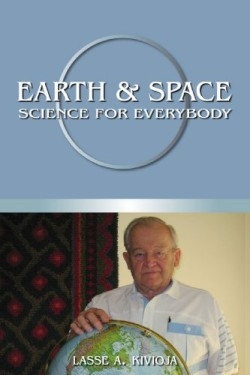Earth & Space
Science for Everybody
In a useful and straightforward study, Lasse A. Kivioja, professor emeritus of Geodetic Sciences at Purdue University, provides a model of the universe intended to educate anyone interested in understanding the Earth’s place in the universe and its relation to the Sun, planets, and galaxies.
Kivioja’s unique approach eschews written resources and encourages the use of the Internet as a primary resource for research into questions regarding Earth and space. In his first chapter, Kivioja provides a list of useful Web sites for earth sciences, and in each subsequent chapter he suggests sites that address the questions raised.
His aim in the book is simply to present factual information regarding the existence of the Earth, its solar system, and the role they play in human existence. He writes, “…we do know that the universe exists, this Earth exists and that we do exist here…The aim of this book is to report the outlines of the latest general findings and knowledge about this Earth, ‘our’ Solar System and the universe.”
In great detail, Kivioja covers a wide variety of topics including star constellations, possible alien visits to the Earth, the Sun’s location in the Milky Way, the size and shape of the Milky Way galaxy, and some details of Earth’s motions, tides, time, oceans, atmosphere, and global warming, and global cooling.
Using boldface print to emphasize key points, Kivioja presents information about earth science in simple and memorable form. For example, in his chapter about tides, he points out that “ Earth’s tides originate from Earth’s daily spinning (rotation) around its N-S spin axis in the gravitational pulling fields of the Moon and Sun.“ He goes on to observe that the “tidal effects of the Moon are approximately twice as large as the Sun’s because the Sun is about 417 times further away from us than the Moon.” Kivioja then recommends looking up the phrases “sun’s mass” and “mass of the moon” on Google to learn more about these celestial bodies and their effects on the tides.
Although Kivioja attempts to simplify earth science, his reliance on detailed mathematical figures makes the book less accessible to the average reader than it might have been. In addition, focus on the Internet as a source of information is limited, since Web sites come and go and the authority of their information is not always clear. Kivioja’s book could have been even more useful if he had included a bibliography of written sources.
The author believes that the Earth is special place that has evolved over generations to be the most suitable planet in the known parts of the Milky Way for humans to inhabit. This book, inspired by his love of the earth sciences, offers an engaging study of the past and future of the planet.
Reviewed by
Henry L. Carrigan
Disclosure: This article is not an endorsement, but a review. The publisher of this book provided free copies of the book and paid a small fee to have their book reviewed by a professional reviewer. Foreword Reviews and Clarion Reviews make no guarantee that the publisher will receive a positive review. Foreword Magazine, Inc. is disclosing this in accordance with the Federal Trade Commission’s 16 CFR, Part 255.

